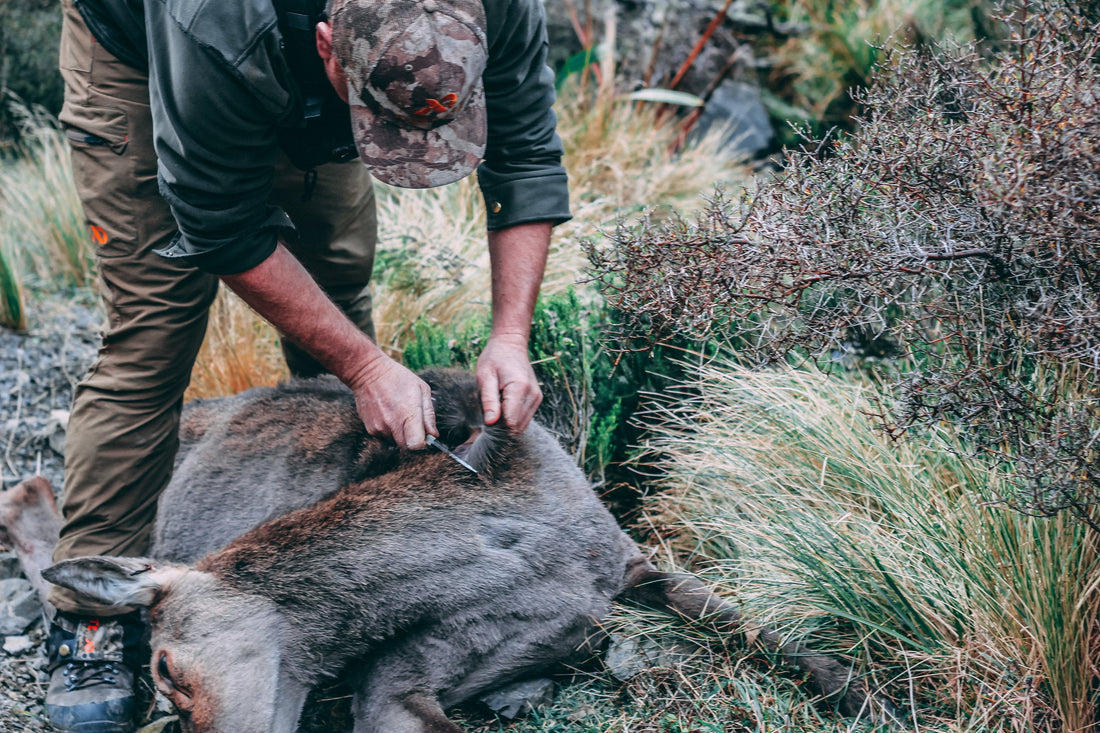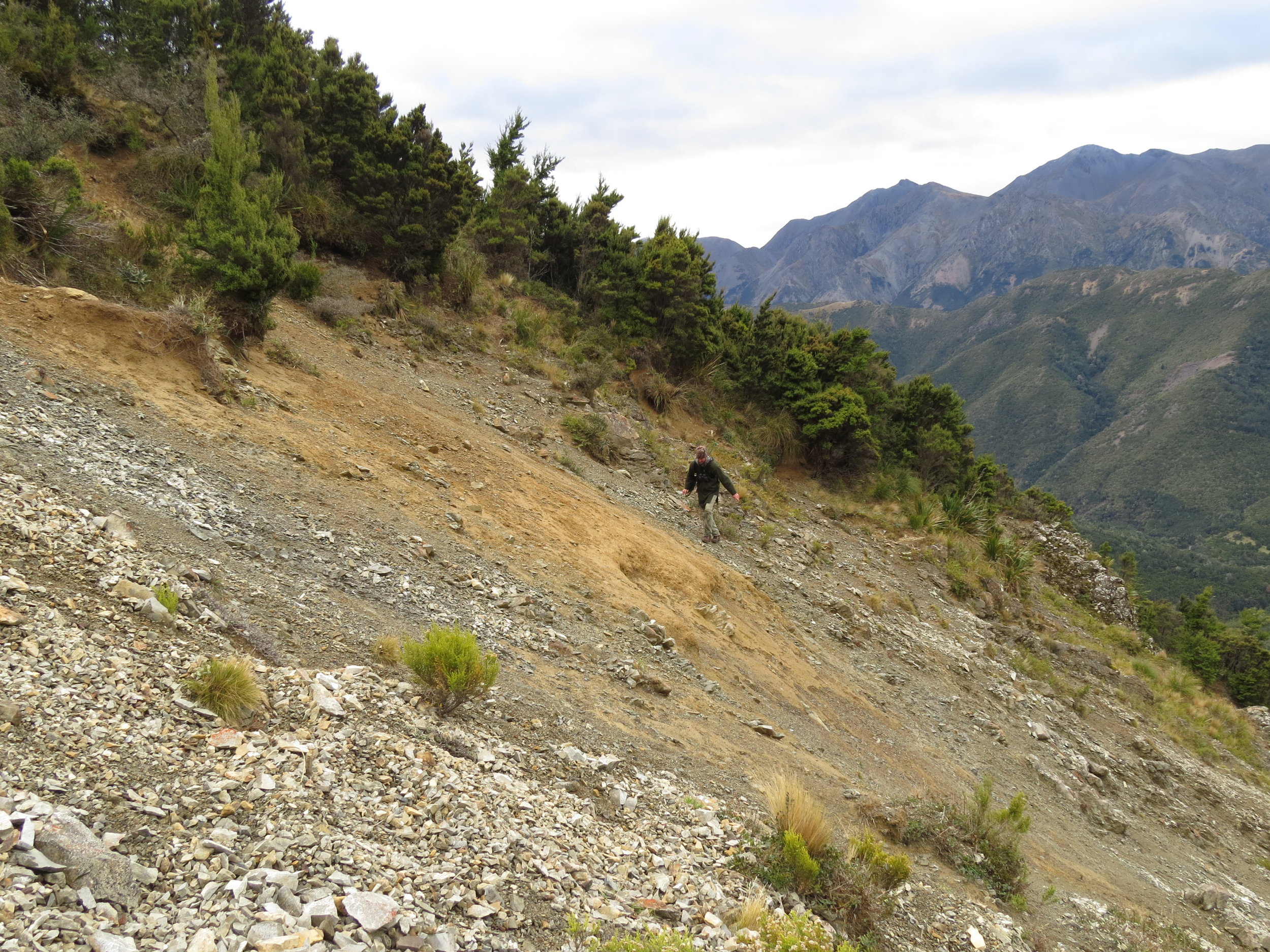
Remote access meat hunters – the truth about what is left behind
By Shaun Monk
Most of us do our deer hunting the hard way here in New Zealand. This island nation is made up of 30% public land most of which is remote back country with foot access only and home to the majority of our deer resource. Just getting yourself into this rugged terrain is enough of a challenge, let alone carrying a carcass back home. Many will resort to back packing out just the high-quality meat portion of the animal and this still yields them some really good venison.
 Most of our deer hunting country is too remote and rugged to carry out entire carcasses.
Most of our deer hunting country is too remote and rugged to carry out entire carcasses.
On the other hand, private land with vehicle tracks and fertile fields that wild deer are attracted to is not available to everyone and those that get the opportunity will have a reasonable chance of securing a deer without too much effort. The bonus is that they can often recover the entire deer carcass with a vehicle and if they’ve head shot the animal then all of the meat can be recovered.
Myself personally I’ve been able to do a mix of both “truck hunting” and remote back pack hunting and I certainly have enjoyed both. I do all of my own self-butchery and have learned a lot about what affects the quality of final product. I’ve also carried numerous whole carcasses out of the bush and when I say numerous, I mean over 150 tonnes worth, my worn-out knees and multiple surgeries can attest to that! And it’s a bitter reflection to realise that 60 tonnes of that was the stuff that I just threw away, skin and bone! Rapidly approaching “mid-life” I’ve come to realise that the longevity of my remote wilderness hunting career is directly correlated to my physical health. Classic that most of us figure that out once it’s almost too late! What this means now is lightening the load, either by taking a young strong person to destroy, or being wise about where I make a shot and then just taking what I can comfortably carry and sometimes that means leaving a bit of the ‘front end” behind.
 Too far from any vehicle access, time to break a carcass down.
Too far from any vehicle access, time to break a carcass down.
Now there are a handful of people who call me out for being wasteful to leave parts of a deer on a remote hill side and that’s fair enough, but I wanted to answer those questions with more certainty so I called on a fellow hunter and owner of a home-kill butchery service Vaughn Wesselson to provide the facts and figures.
Vaughn broke down a deer and weighed the skin, bone and meat sections with remote “rear end” recovery versus whole carcass recovery in mind. Using a red deer spiker we found that the total amount of all venison recovered is about 60% of the gutted carcass weight. Of this boned-out meat, 46% was made up of low-quality cuts useful for slow cooking and processing into small goods such as sausages and salamis. This lower quality meat comes from the neck, ribs, hocks and shoulders. The high-quality cuts from the hind quarters, back steaks and tenderloins make up 54% of all boned out meat.
When it comes to hill-side meat recovery there are lots of ways to do it and the keenest will spend the time boning out as much as they possibly can. If you are camping out and can leave the gutted carcass to cool and set this makes the skinning and boning a lot cleaner and retains meat quality better. Storing boned out meat in muslin cloth or a pillow case allows the meat to breath and continue to cool while packing out, plus there are now some fantastic lightweight pack options for handling heavy loads with comfort.
 The classic “deer-bum back pack” plus tenderloin fillets and back steaks in the day pack. Only 43% of the carcass weight but 54% of the boned out meat, including all of the choice cuts.
The classic “deer-bum back pack” plus tenderloin fillets and back steaks in the day pack. Only 43% of the carcass weight but 54% of the boned out meat, including all of the choice cuts.
I still use an old school technique of carrying the hind quarters as a “deer-bum backpack”. This is basically the back end of the deer with the pelvis still in, hocks removed and the skin still on with a couple of deer skin flaps left attached as pack straps. Add the tenderloin fillets and back-steaks into your belt bag and you’re away, hands free to carry your rifle and with some degree of comfort and safety. The biggest factor for me choosing this system is that it’s easier to keep the meat clean and tidy and I can still hang the hind quarters in the chiller back home to age with skin on and bone in avoiding the “black skin” that forms on exposed aged meat. This way I can replicate the quality of final product almost as well as a deer I’ve picked up with the ute as a whole carcass aged with the skin on and processed in the butchery. The deer-bum backpack by weight makes up just 43% of the gutted deer carcass so I am leaving the majority of weight behind and saving my knees a little.
 Leave strips of skin from along the back-steaks attached to the rump to make straps for your deer-bum backpack.
Leave strips of skin from along the back-steaks attached to the rump to make straps for your deer-bum backpack.
But when I leave the front end of a deer on the hill, what am I actually wasting? The gutted carcass of the spiker weighed 46 kg and this yielded 12.5 kg of neck, shoulder, rib and hock meat. Yes, that is a waste but let’s be honest, removing this low-quality meat is fairly difficult and time consuming having to work around a lot more bone in the front end. It’s also very difficult to keep this meat clean during hillside butchery. Another factor to consider is that when backcountry field shooting, a shoulder shot placement is common practice. The damage from the bullet hole, bone fragmentation and impact shock will considerably reduce the amount useable meat from the front end of the deer. In some cases, in my opinion there isn’t a lot left to be worth bothering with.
In summary when lugging out a deer-bum back pack plus tenderloins and back steaks, you are carrying 43% of the carcass weight to recover 54% of the meat, which makes up all of the high-quality clean cuts. When I am doing the hard yards foot hunting in remote areas, this option seems to make the most sense for me.




